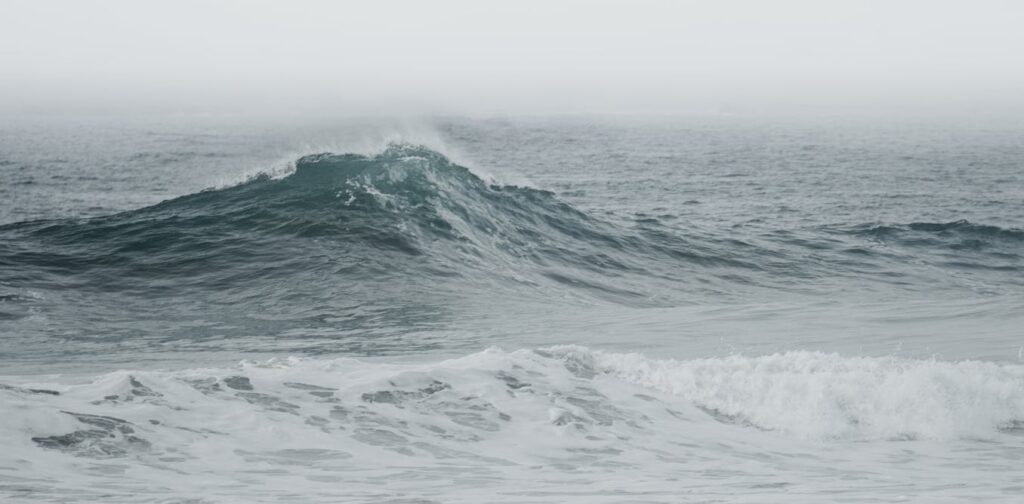
Rogue waves, those towering giants of the sea, have long fascinated both seafarers and scientists. These colossal waves, often appearing out of nowhere, can reach heights of 65 feet (20 meters) or more, posing significant dangers to ships and offshore structures. Once considered nautical myths, rogue waves have now been documented worldwide, and a recent study has shed new light on their origins.
An international research team, led by a group of scientists, has published a groundbreaking study in Nature Scientific Reports that challenges previous notions about these oceanic behemoths. By analyzing 18 years of high-frequency laser measurements from the Ekofisk oil platform in the central North Sea, the researchers concluded that rogue waves are not mere freak occurrences but arise under the natural laws of the sea.
The Data Behind the Discovery
The study meticulously examined nearly 27,500 half-hour wave records, or sea states, collected between 2003 and 2020. These records, taken every 30 minutes, provide a detailed account of sea surface elevations compared to average sea levels, including during major storms like the Andrea wave event in 2007.
Under typical conditions, waves are generated by wind blowing over the sea surface, much like ripples forming when one blows over a cup of coffee. With enough time and space, these ripples can evolve into large waves. However, the research team focused on understanding why some waves suddenly go rogue, rising far above their neighbors.
Challenging Established Theories
One prevailing theory, known as modulational instability, suggests that rogue waves form due to complex mathematical phenomena. However, the study’s findings indicate that this theory does not fully explain rogue wave formation in the open ocean. While modulational instability may apply to waves confined in narrow channels, it falls short in the open sea, where waves can propagate from multiple directions.
To illustrate, imagine a crowd leaving a stadium. In a narrow hallway, people are forced to move in a single direction, potentially piling up like rogue waves. In contrast, an open field allows for free dispersal, preventing such pileups. Similarly, rogue waves in the open sea do not adhere to the same physics as those in confined channels.
A New Understanding of Rogue Waves
The researchers turned to statistical techniques to analyze the sea state records, uncovering patterns behind these rare events. Their findings suggest that rogue waves are more likely formed through a process called constructive interference. This occurs when multiple waves align and combine into a single, massive wave, amplified by the natural asymmetry of sea waves, with sharper crests and flatter troughs.
Rogue waves form when numerous smaller waves converge, their steeper crests stacking to create a towering wave that briefly rises above its surroundings. This process follows a quasi-deterministic pattern, recognizable and repeatable but with elements of randomness. In an idealized ocean, this randomness would nearly vanish, allowing rogue waves to reach immense heights. However, in reality, wave breaking limits their growth, as the wave’s tip spills over and breaks into foam, releasing excess energy.
The Quasi-Deterministic Pattern
Rogue waves are not exclusive to the sea. Constructive interference can occur in various wave systems, as explained by oceanographer Paolo Boccotti’s quasi-determinism theory. This theory accounts for rogue wave formation in both oceanic and other wave environments.
For example, in turbulent water flowing through a confined channel, a rogue wave manifests as an intense, short-lived spike in vortices. While ocean waves may seem unpredictable, Boccotti’s theory demonstrates that extreme waves are not entirely random. When a large wave forms, surrounding waves follow a recognizable pattern through constructive interference.
On November 24, 2023, a powerful storm hit the North Sea, capturing a massive 55-foot (17-meter) rogue wave on camera at the Ekofisk platform.
The research team applied Boccotti’s theory and an AI model to investigate this extreme wave’s origin. Their analysis confirmed that the rogue event followed quasi-determinism and constructive interference, resulting from multiple smaller waves stacking together.
Implications and Future Directions
Understanding how rogue waves form has significant implications for maritime safety. Engineers and designers can use this knowledge to build safer ships and offshore platforms, better predicting risks associated with these formidable waves.
As the study reveals, rogue waves are not just a matter of chance but follow patterns that can be identified and analyzed. This insight opens the door to further research, potentially leading to improved forecasting models and enhanced safety measures for those navigating the world’s oceans.
In the quest to unravel the mysteries of the sea, this study marks a significant step forward, offering a clearer picture of the forces at play in the formation of rogue waves. As researchers continue to explore these phenomena, the hope is to mitigate the dangers they pose and ensure safer journeys across our planet’s vast and unpredictable waters.







